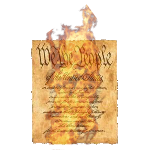
So, as the new West Coast Pact starts talking about how to get everything moving again we need to talk about control; control of the virus and control of the government.
‘Cause this isn’t over yet.
The virus is still out there, circulating in our communities, so whatever we start back up will absolutely have to take that into account.
I’ve written about this a lot:
- Social Distancing: It’s Not Just Hunkering Down Anymore
- Buckle Up: It’s Gonna Be Like This For A While
- A New Normal: Business In A Time Of Pandemic
We also need to be careful about maintaining the limits on what the governments actual powers are (or should be) in this situation.
I’ve written about this a lot too:
- Still Idiots: Not Totally Wrong
- More Stupid Secrets: Why Were These Briefings Classified?
- Don’t Get Comfortable: Quarantine, Evacuation, And Curfew
The next few weeks will be important.
What we do now is going to set the path for the next few years.
So, let’s do it right.
I already addressed that no sane reading of the Constitution allows the government the power to issue blanket orders controlling movement or assembly in this country. That’s still true.
Mandating individual quarantines is fine, and necessary: if you’re known to be sick or (probably) reasonably likely to be sick and awaiting test results, then the State should be able to make you stay home.
(You should be staying home as much as possible right now anyway, but there’s no reading of the Constitution that let’s them force you to. Like I said before, Bundy’s still stupid even though he’s not wrong.)
The courts, of course, don’t read the Constitution that way; they read it as allowing the government to do whatever the hell it wants to as long as they come up with the barest textual fig leaf for it. But that’s another issue altogether.
Privacy and tracking will be the big issue.
Being able to rapidly identify new infections and trace all the secondary contacts of newly infected people would be key to keeping the infection levels down while opening up more person-to-person contact, at least until we have a vaccine.
That is true, undeniably.
But it needs to be done very carefully.
It has been pointed out many times: clawing back emergency powers from the government is almost impossible, and takes years or decades in even the best case. Hell, we still have huge parts of the PATRIOT Act around and that was never necessary in the first place.
So we’d better do this right the first time:
- passive systems only: no mandatory active monitoring, since those carry too many risks of secondary effects and data leakages
- optional active tracking: as a phone app, but only with local storage and the option for the user to upload a history in the event the user is infected
- independent data warehousing: any data involved should be held by an independent government entity, along the lines of a utility district
- data release only with cause: no identifiable data should leave the warehouse without a quarantine-worthy belief that the individual is likely to be infected
- distributed analysis: data should only be released to local county health departments for analysis and action
- no police or other State participation: it’s not necessary, and should be explicitly forbidden
- no private participation: it’s also not necessary, and should be explicitly forbidden; it’s especially important to forbid for-profit participation
That should be it for government systems.
That’s all they need to get the job done, and it preserves the individual’s privacy and liberty pre-infection.
And of course the system needs very strong oversight. California has a history of setting things up as appointed commissions with no effective oversight; that’s always been bad, but it absolutely cannot be allowed in this.
The public must be able to trust this system, not just because that should always be the case but specifically because they may well not participate unless they trust it. And public participation is necessary to make this work.


One thought on “Don’t Get Comfortable: Privacy, Movement And Isolation”